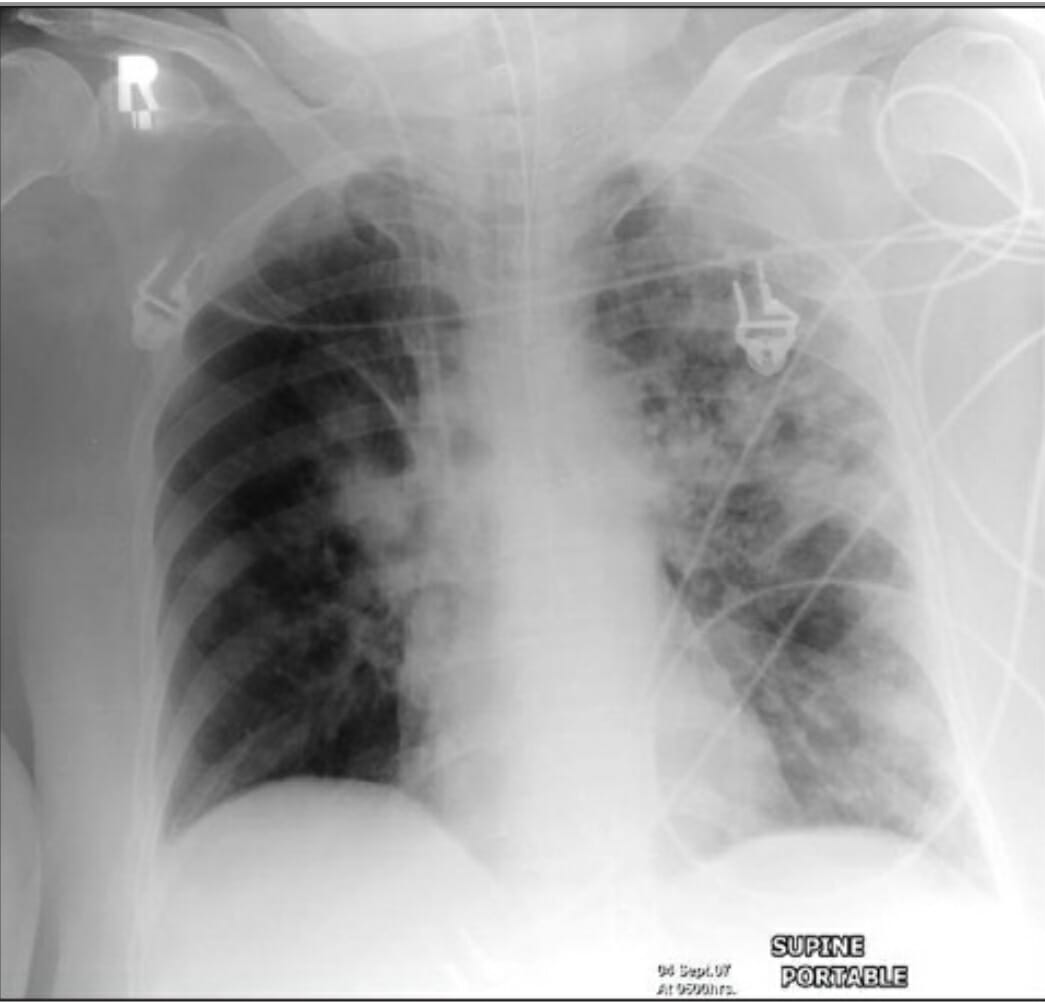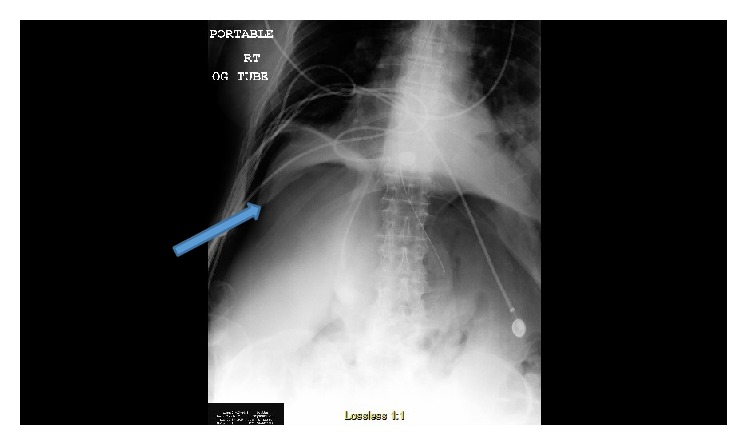Playlist
Show Playlist
Hide Playlist
Introduction – Lung Disease
-
Slides 03 LungDisease Overview Basic.pdf
-
Download Lecture Overview
00:01 In this talk, I'll describe the different types of lung disease that'll be covered by the course. Why bother learning about lung diseases? Well, simply, lung diseases are incredibly common. Asthma and COPD, which are chronic lung diseases affecting the airways, together probably affect about 10% of the population, and they are individually some… one of the commonest chronic diseases that affect man. Lung cancer is the commonest fatal lung cancer, and it's responsible for more deaths than the next three or four common cancers added together. And that's both true for men and for women. 00:38 And lung diseases encompasses three of the most important pathogens that affect humans: influenza A, the commonest cause of viral death; tuberculosis and pneumococcus, which are the two commonest causes of bacterial death, causing TB and pneumonia respectively. 00:53 So learning about lung diseases—about these specific lung diseases—is essential, pretty much, for every doctor. In addition, there are a range of lung conditions which are also, although not as common as, say, asthma or pneumonia or lung cancer, are still very common. That includes pulmonary emboli, bronchiectasis, the interstitial lung diseases, problems such as pleural effusions, and obstructive sleep apnea. For example, obstructive sleep apnea is estimated to affect about 1% of the population and is particularly prevalent in middle-aged men. So these are all diseases that you need to know something about if you'd like to practice as a clinician. So, how can we categorize lung diseases? Well, we can do this anatomically. We can see about which part of the lung has been affected by the disease. So there are diseases of the lower airways: the upper part and the lower lower airways. There are diseases of the lung parenchyma, the interstitium, and the alveoli themselves. There are diseases that affect the circulation—largely, the pulmonary artery circulation. And there are diseases that affect the pleura. Plus, in addition, there are diseases of physiology of the control of respiration. And each of these areas will be covered by separate talks in a subsequent course. 02:07 Taking each of those areas individually: If we're talking about diseases of the airways, we can break those down into large airways obstruction diseases: cancers and benign problems affecting the trachea and the larger bronchi that obstruct those airways. 02:22 And then there are the diseases that affect the lower airways, and those tend to cause airways obstruction, and the commonest one is… commonest ones are asthma, which causes reversible airways obstruction; and smoking-related lung disease: COPD, chronic obstructive pulmonary disease, which causes irreversible airways obstruction. And there are a range of other causes—which are much rarer—of airways obstruction as well. 02:47 In addition, the airways can be affected by infection, and that can be an acute infection, a bronchitis, a tracheobronchitis, a bacterial or viral infection affecting the upper part of the lower airways, or it could be a chronic infection, and that's largely bronchiectasis. 03:01 And cystic fibrosis is a particularly aggressive form of bronchiectasis which is a genetically inherited disorder and the commonest one of those which causes death in the Western world. 03:12 And the central airways are also a site where cancer can arise—mainly squamous cell and small-cell lung cancer—but there are rarer tumors that can affect that as well, such as carcinoid or metastases from extrathoracic malignancies. 03:24 And then you move deeper into the lung and you get to the alveoli and the interstitium, and the commonest diseases are because problems there are the infections, pneumonia and tuberculosis, which are the prevalent… most prevalent serious infectious diseases across the globe. And then there are a large range of less common but important noninfective infiltrations that can affect the alveoli and the interstitium, and the most important ones of those are pulmonary fibrosis and sarcoidosis, but there are a very large number of rarer types of infiltrations that can affect that area. 04:00 And then another noninfective problem, which is very important, is the adult respiratory distress syndrome (ARDS), and this is a physiological response to an excessive inflammatory insult to the body, where you get non-cardiogenic pulmonary edema—filling up of water of the alveoli—and that presents with respiratory failure coming on very quickly. 04:23 And many lung cancers actually arise in what looks like the alveoli and the interstitium, probably from the small airways in that area, but they will be peripheral tumors, visible on the x-ray growing in the periphery of the lung. And adenocarcinoma is the most common type of lung cancer that does that. And pulmonary metastases from extrathoracic malignancies are often seen in the parenchyma of the lung. The vascular system: The main problem there is pulmonary emboli. These are clots that have traveled from other parts of the body from the systemic venous circulation to the right side of the heart and then are shot into the pulmonary artery circulation, where they block a pulmonary artery and cause problems. 05:04 And this is a very common condition, which can present in a myriad different ways. 05:09 The other major problem with the pulmonary vasculature is called pulmonary hypertension, and that is large—that's… so that's high blood pressure in the pulmonary artery—and that's largely a consequence of chronic lung disease of the hypoxia driving the formation of a high blood pressure in the pulmonary arteries but can occur in other conditions as well. I've listed hemoptysis and vasculitis here. 05:31 Vasculitis is a very rare inflammatory condition of the pulmonary arteries—bronchial arteries—is not really particularly common. Hemoptysis, though, is a very common symptom, and we need to know about the causes of that and how major hemoptysis—when patients present coughing up very large amounts of blood—are treated. Moving outside of the lung to the pleura: The pleural effusions—fluid in the pleural space—is an incredibly common problem in many different medical specialties. And those are normally divided into transudates, which means the pleura is normal, but the cause is a cardiac or renal or other problem, and which is why pleural effusions are common in other specialties. Or it's when the… or it's an exudate, where the pleura is abnormal due to tumor infiltration or inflammation or infection. In addition, you can get air in the pleural space, which is called a pneumothorax, and that's a relatively common condition that can affect otherwise totally fit young people. Pleural infection is a form of exudative pleural effusion but is a little bit more complex, and that's broken down into empyema and complex parapneumonic effusions. These are… that's infection arising in the pleural space as a consequence of pneumonia, and tuberculosis, because one of the common presentations of tuberculosis will be with pleural effusions. And then there are malignancies that affect the pleura. There's a primary malignancy of the pleura called the mesothelioma. Now that's relatively common unless you've been exposed to asbestos, and in those people, it's relatively common. And then the pleura is a very common site for secondary spread of malignancy from other sites. So for example, a primary lung cancer will frequently spread to affect the pleura, as will breast cancer, colon cancer, and many other malignancies outside the lung, and they will present with an exudative pleural effusion. 07:25 The last major area of respiratory disease that will be discussed in the course are disorders of physiology. And what we're talking about here are problems with ventilation of the lung, largely: obstructive sleep apnea, which is a condition which affects middle-aged men largely and is a intermittent obstruction of the pharynx during sleep. And there's obesity hypoventilation, which is a situation where very obese people are unable to ventilate their lungs effectively. And there are rarer causes of this ventilation defect as well that can… will be discussed.
About the Lecture
The lecture Introduction – Lung Disease by Jeremy Brown, PhD, MRCP(UK), MBBS is from the course Introduction to the Respiratory System.
Included Quiz Questions
What is the most common cause of cancer deaths in both males and females?
- Lung cancer
- Prostate cancer
- Breast cancer
- Colorectal cancer
- Pancreatic cancer
Asthma primarily affects...?
- ...the lower airways.
- ...the upper airways.
- ...the pleura.
- ...the pulmonary vasculature.
- ...the lung parenchyma.
Which of the following can be a cause of an exudative pleural effusion?
- Tuberculosis
- Congestive heart failure
- Nephrotic syndrome
- Peritoneal dialysis
- Liver cirrhosis
Which of the following is involved in the pathophysiology of acute respiratory distress syndrome?
- Physiologic response to an excessive inflammatory insult
- Hypoventilation
- Lower airway obstruction
- Intermittent pharyngeal airflow obstruction
- Accumulation of fluid in the pleural space
Customer reviews
5,0 of 5 stars
| 5 Stars |
|
5 |
| 4 Stars |
|
0 |
| 3 Stars |
|
0 |
| 2 Stars |
|
0 |
| 1 Star |
|
0 |









